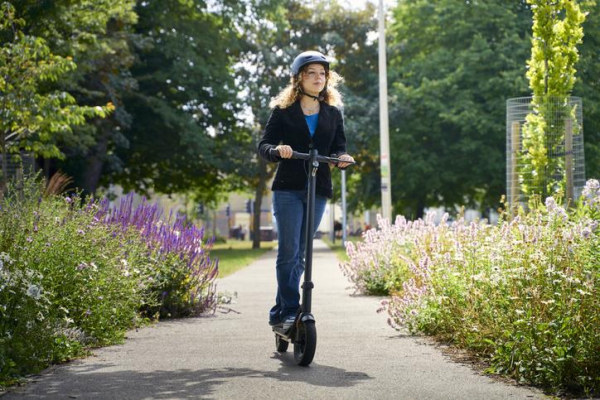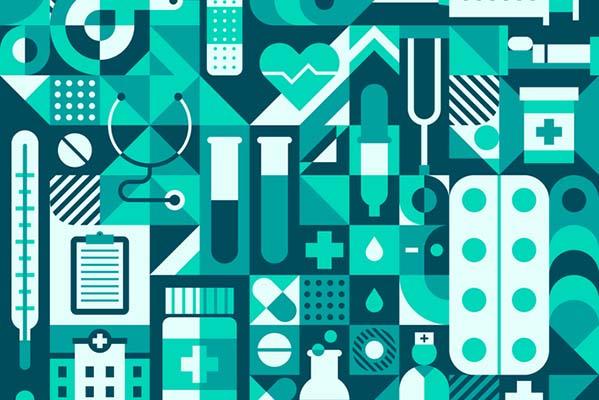
Protect your skin during heat waves — here’s how

Global average temperatures have soared in 2024, surpassing records set just last year. Extreme heat poses numerous health risks, some of which are visible on our skin. Understanding how heat affects your skin can help you take measures to prevent or ease heat rash, eczema, rosacea, the discoloration of melasma, and many other skin conditions sparked or worsened by high temperatures.
How does heat affect your skin?
Heat waves can provoke or worsen several skin conditions.
- Heat rash (miliaria) occurs due to obstruction of sweat ducts on the skin, which are responsible for helping the body maintain a normal temperature by releasing water to the surface of the skin. As these sweat glands get blocked with excessive sweat on an extremely hot day, they do not function properly and red itchy bumps develop.
- Grover disease, a rash of small, red, itchy bumps on the chest and back, can also be triggered or worsened by excessive heat and sweating. Often this clears up within a few weeks or months. Less often symptoms may persist for years, with flares during the summer months.
- Eczema is a chronic skin condition characterized by dry, itchy plaques that affects millions of people in the United States. Increased sweating during heat waves can lead to skin irritation and inflammation, aggravating eczema symptoms. Dehydration caused by fluid loss through sweating can make the skin more susceptible to eczema flare-ups.
- Rosacea, which causes facial redness, visible blood vessels, and acne-like bumps, is also heat-sensitive. Heat causes blood vessels to dilate as the body attempts to cool itself, resulting in visible redness and flushing. High temperatures, especially combined with sun exposure, can cause flare ups.
- Melasma. Hyperpigmentation disorders like melasma also worsen with heat. Melasma is characterized by irregular dark patches on the face and is often triggered by UV exposure from the sun. Heat can increase the activity of melanocytes, the cells that produce pigment, making these patches more pronounced. Additionally, the combined effects of heat and UV radiation accelerate collagen and elastin degradation, leading to premature aging and loss of skin elasticity.
- Skin cancer risk rises with increased exposure to UV radiation. Heat waves — now beginning earlier, ending later, and lasting longer — contribute to UV exposure, particularly among people who work outdoors. And preliminary research suggests prolonged exposure to high temperatures may further boost skin cancer risk. This could be of particular concern for firefighters, who face extended exposure to extreme heat.
Heat waves, air pollution, and skin
During heat waves, levels of environmental pollutants like ozone and particulate matter can rise. And reactions between these pollutants, heat, and UV radiation spawn secondary pollutants such as peroxyacetyl nitrates (PANs). Pollutants like these can irritate the skin and contribute to inflammation through oxidative stress and DNA damage, so inflammatory conditions such as eczema and rosacea may worsen.
Can heat affect medications?
High temperatures compromise the effectiveness of certain medications. For instance, EpiPens, which are crucial for managing life-threatening allergic reactions, can lose their potency when exposed to high temperatures. Check the instructions on all of your medicines to see which ones should be stored in a cool, dry place or refrigerated. If you’re not sure which medicines might be affected by heat, talk to your pharmacist or doctor.
Retinoids in skin care products, antibiotics taken for acne, and immunomodulators for autoimmune diseases can make skin more susceptible to sun damage. This can lead to severe sunburns or rashes known as photodermatoses. If you experience this, contact your health care team for advice.
Protect your skin when temperatures climb
Keep skin cool
- Wear light, breathable clothing. Choose natural fibers like cotton and linen to help regulate body temperature and prevent sweat-induced skin issues. Avoid synthetic fabrics, which can trap heat and moisture.
- Take cool baths or showers. Use cool or tepid water to bathe. Avoid hot showers, which can strip the skin of natural oils, leading to dryness and irritation.
- Find cool spaces. If your home is not air-conditioned, seek out cooler places and ways to cool off during heat waves.
Keep skin hydrated
- Drink ample water and eat water-rich foods. Foods like watermelon and cucumbers can provide additional hydration.
- Moisturize your skin. Apply light, non-comedogenic moisturizers immediately after bathing. Look for ingredients such as hyaluronic acid and glycerin, which are beneficial for enhancing skin hydration.
Limit exposure to sun and pollution
- Use protective clothing. Wear wide-brimmed hats, UV-blocking sunglasses, and long-sleeved shirts to shield the skin from harmful radiation.
- Wear sunscreen. Apply broad-spectrum mineral sunscreens containing zinc oxide, titanium dioxide, or iron oxide to protect against UV radiation and pollutants.
- Use topical antioxidants. Use products like vitamin C in your morning skin care routine to mitigate oxidative stress.
- Wash up. Cleansing face and body at the end of the day may help you limit skin exposure to pollutants while also rinsing off any sunscreen residue.
About the Authors

Kathyana P. Santiago Mangual, Contributor
Kathyana P. Santiago Mangual is a clinical research fellow in dermatology at Massachusetts General Hospital and Harvard Medical School. She is also a medical student at the University of California, Los Angeles, and will be graduating … See Full Bio View all posts by Kathyana P. Santiago Mangual 
Arianne Shadi Kourosh, MD, MPH, Contributor
Arianne Shadi Kourosh, MD, MPH, is a board certified dermatologist and associate professor of dermatology at Harvard Medical School. She is a graduate of the Harvard T.H. Chan School of Public Health and the University of … See Full Bio View all posts by Arianne Shadi Kourosh, MD, MPH





